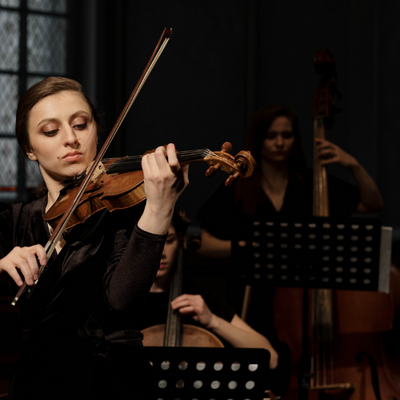
The landscape of learning string instruments is evolving at an unprecedented rate, thanks to the integration of technology in music education. From digital tools that enhance practice routines to online violin lessons that make professional instruction more accessible, today’s music students have resources that previous generations could hardly imagine. While the traditional techniques of playing violins, violas, cellos, and double basses are still foundational, the adoption of technology is opening new avenues for musicians at all levels. Here, we’ll explore how technology is reshaping string instrument learning and the practices it enhances.
Enhanced Accessibility through Online Lessons
Technology has made quality instruction accessible to students worldwide, with online violin lessons allowing them to learn from accomplished musicians regardless of location. Video conferencing provides real-time feedback, helping students build proper technique, while recorded sessions enable them to review challenging sections as needed.
These online lessons reduce the financial and logistical barriers of traditional tuition, saving travel time and making scheduling easier for families. Schools also benefit, as students from different regions can now join virtual orchestras, creating collaborative learning environments that support growth and connection.
Digital Tools for Musicians: Revolutionising Practice Routines

For musicians, practice is paramount. Yet, practising can be challenging, particularly when students are unsure of their progress or don’t have immediate feedback on their performance. Digital tools, specifically designed for musicians, address these challenges by offering a range of features to support effective practice.
Metronome and Tuner Apps: Basic yet essential, these apps help musicians maintain rhythm and accuracy. Metronomes keep timing precise, while tuners ensure the instrument is tuned to perfection. Several apps have combined these functions, making it easier for students to stay in tune and on time without needing separate devices.
Practice Trackers and Digital Sheet Music: Tracking one’s progress is crucial for motivation and improvement. Practice tracker apps allow musicians to set goals, monitor their time, and even record performances for later review. Digital sheet music, often available through these apps, provides access to vast libraries, reducing the need to carry or purchase physical copies. Interactive sheet music apps can also turn pages automatically, an invaluable tool during practice or performance, allowing students to focus entirely on their technique.
Recording and Playback Features: Recording and playback capabilities offer a more objective way of assessing progress. When students record their sessions, they can listen to them later, identifying areas for improvement that may have gone unnoticed in real-time. This self-assessment encourages critical listening skills, an essential component of any musician's training. With these tools, students gain a better understanding of their strengths and areas that need work, creating a more focused approach to learning.
Learning with AI-Powered Feedback
Recent advancements in artificial intelligence (AI) have brought about tools that provide immediate, precise feedback on aspects like intonation, bowing technique, and rhythm. These tools, such as Smart Music or Yousician, work by analysing a musician’s performance and offering feedback that replicates, to some extent, what a music instructor might say. For beginner and intermediate students, AI-powered feedback can be an excellent way to reinforce proper technique and build confidence, especially between formal lessons. However, it's important to view these tools as complements to human instruction, as they can’t replace the personalised guidance and experience a skilled instructor offers.
For schools, these AI tools are particularly beneficial, as they allow teachers to assign exercises that students can work on independently. Teachers can then review recorded performances or feedback provided by the app, enabling them to focus on specific areas during lesson time, making the process more efficient and tailored to each student’s needs.
Broadening Musical Horizons with Online Communities

Technology has also fostered online communities where musicians can connect, collaborate, and learn from one another. Through forums, social media groups, and platforms dedicated to music education, students and teachers alike share their experiences, challenges, and achievements. These communities often include experienced players who are willing to offer advice, tips, or feedback on everything from choosing the right instrument to perfecting a difficult piece.
This sense of community is especially valuable for young musicians who may feel isolated in their passion. Being part of a group of like-minded individuals provides encouragement and motivation, turning learning into a shared journey. Schools and music programs that encourage students to participate in these communities are fostering a global perspective on music, helping students appreciate diverse approaches and techniques from different cultural backgrounds.
Balancing Technology with Tradition
While the advantages of incorporating technology in music education are clear, it’s important to remember the balance between technology and traditional learning methods. String instruments, with their complex techniques and expressive nuances, require a deep, almost tactile understanding that comes from hands-on practice and guidance. The best outcomes come from blending technological tools with a foundation rooted in traditional technique and instruction. For example, while digital tuners are convenient, students should still learn to tune their instruments by ear, cultivating an essential musical skill.
Conclusion
Ultimately, technology in music education is not about replacing traditional methods but enhancing them. For young musicians in schools or private settings, these tools offer support, accessibility, and flexibility. By embracing digital tools thoughtfully, today’s students can develop a well-rounded skill set that prepares them for a future where technology and tradition coexist harmoniously in the world of music.





















